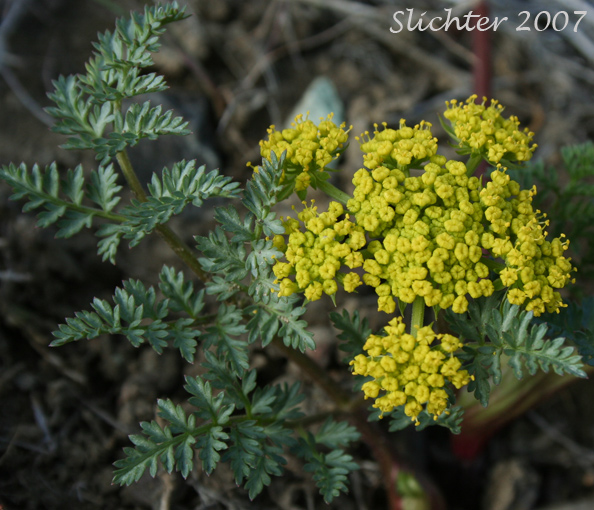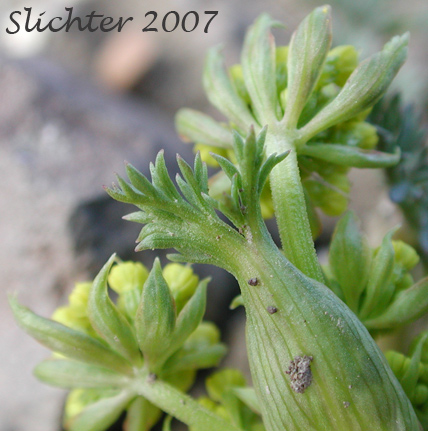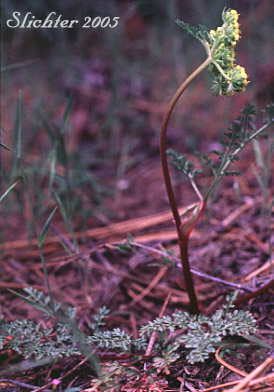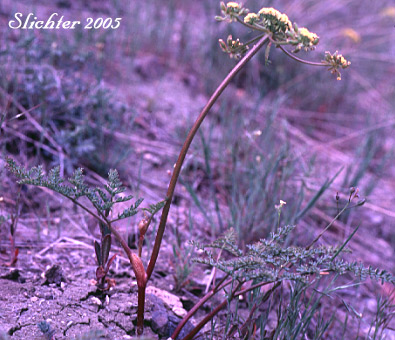
 The
photo at right shows the bracts at the underside of each umbellet in the inflorescence of broadsheath desert parsley as seen from Oregon Highway #207 near Sutton Mt. in central Oregon..........April 8, 2007. Note the broad sheath where the short, developing leaf merges with the stem.
The
photo at right shows the bracts at the underside of each umbellet in the inflorescence of broadsheath desert parsley as seen from Oregon Highway #207 near Sutton Mt. in central Oregon..........April 8, 2007. Note the broad sheath where the short, developing leaf merges with the stem.
Also known as sheathing lomatium, broadsheath desert parsley is a perennial wildflower with the flower scape arising from 15-70 cm high from an elongated but not very thick root. The surface of the stems and leaves ranges from glabrous to rough with minute, granular-textured bumps. The leaves are both basal and on the stem, with several leaves found below midstem. The leaves are 5-15 cm long and dull to bright green in color with long petioles which are dilated or swollen and sheathing at their base. The sheathing base (from which this species gets its name) is often reddish in color, as is much of the flower scape. The blades are ternately or pinnately dissected into numerous crowded, thick, firm segments up to 4 mm long (See photos this page.). The blades also tend to be fairly flat.
The inflorescence is a compact umbel of 8-20 rays which are of unequal lengths measuring from 1-7 cm long. One to several leafy bracts which are oblanceolate to elliptical in shape may be found at the base of the umbel. Several narrowly elliptic to oblanceolate bracts may also be found at the base of each umbellet. The slender pedicels measure from 5-15 mm long and are topped by yellow flowers. The fruits are granular-roughened when young and become glabrous when mature. They are elliptic-oblong in outline and measure 8-13 mm long and 5-8 mm wide with narrow raised ribs lengthwise along the body of the fruit and wings nearly as wide as the body.
Broadsheath desert parsley may be found on dry open, slopes and flats in the valleys and foothills. It is often found on heavy clay soils associated with volcanic tuff.
Broadsheath desert parsley may be found from Baker, Crook, Grant and Union counties of central and eastern Oregon east to Owyhee County in southwestern Idaho and south to northeastern California and northwestern Nevada.
 -
- 